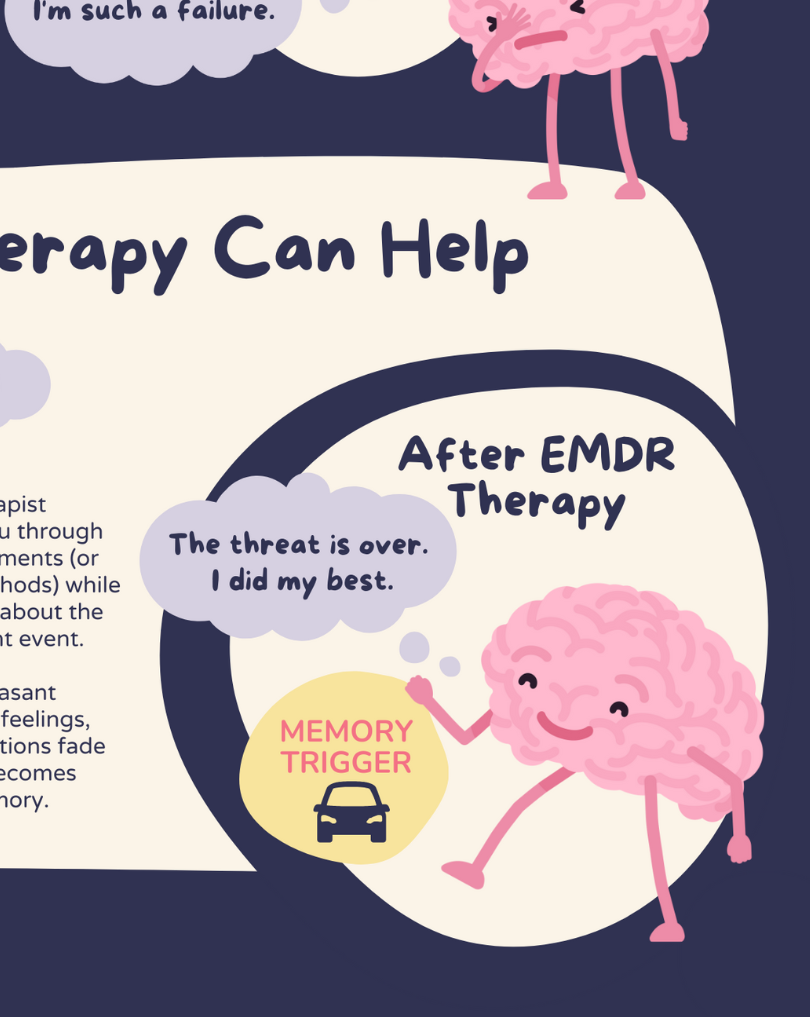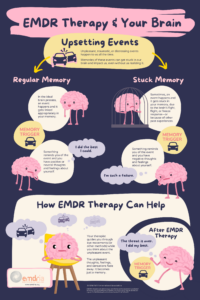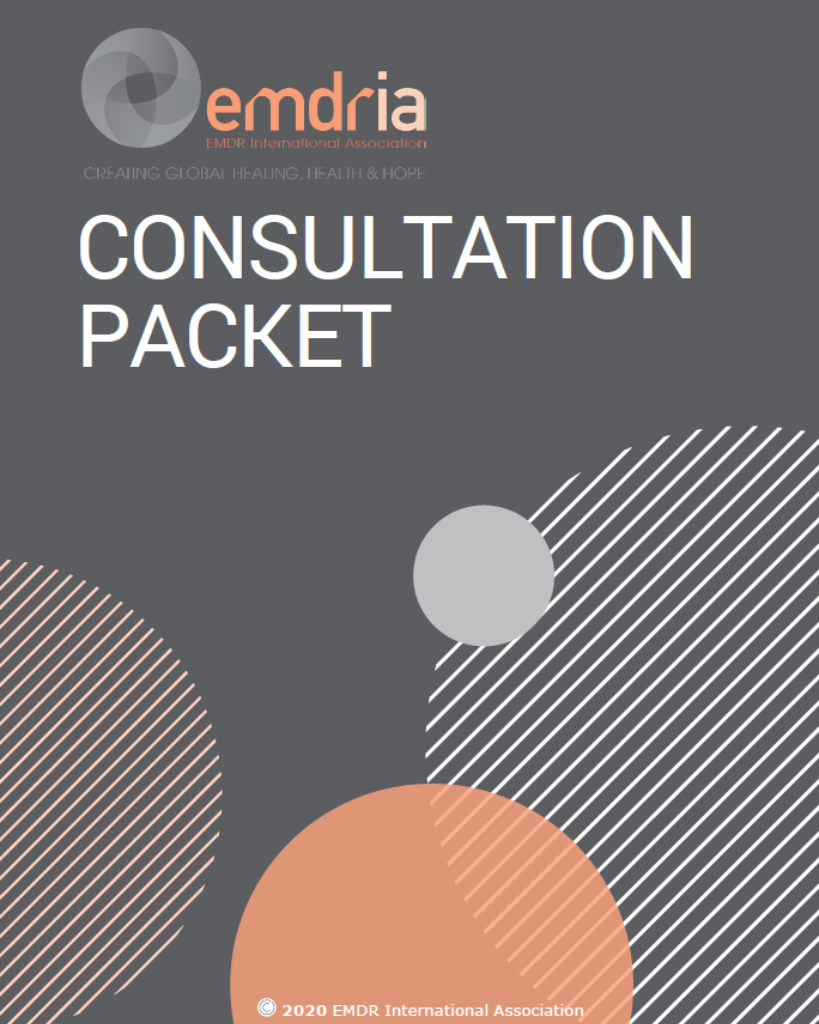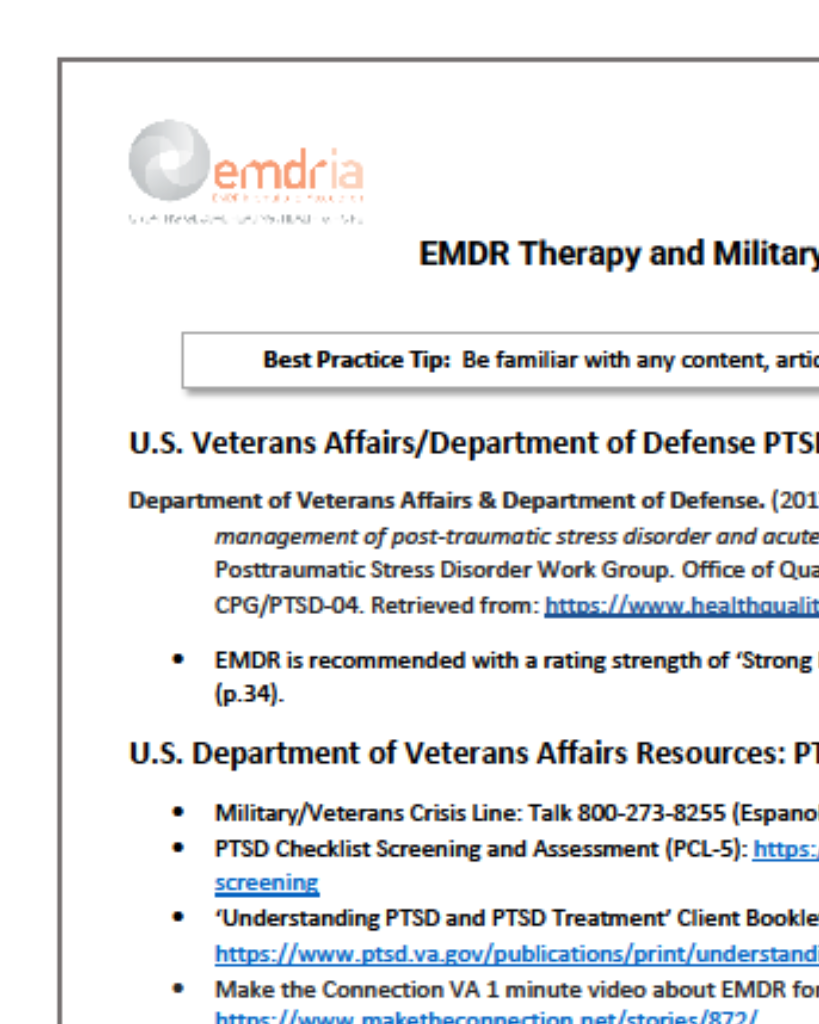EMDR Therapy and Your Brain
This graphic was created to help the public understand how EMDR helps the brain process certain memories, describing regular vs. stuck memories using a cartoon brain to illustrate.
Transcript
EMDR Therapy and Your Brain
Upsetting Events
Unpleasant, traumatic, or distressing events happen to us all the time. Memories of these events can get stuck in our brain and impact us, even without us realizing it.
Regular Memory
In the ideal brain process, an event happens and it gets linked appropriately in your memory. Something reminds you of the event and you have positive or neutral thoughts and feelings about yourself. “I did the best I could.”
Stuck Memory
Sometimes, an event happens and it gets stuck in your memory, due to the brain’s fight, flight, or freeze response—or because of other past experiences. Something reminds you of the event and you have negative thoughts and feelings about yourself. “I’m such a failure.”
How EMDR Therapy Can Help
Your therapist guides you through eye movements (or other methods) while you think about the unpleasant event. The unpleasant thoughts, feelings, and sensations fade away. It becomes just a memory.
After EMDR Therapy
“The threat is over. I did my best.”
Originally published October 1, 2023. Updated September 20, 2024.
Date
October 1, 2023
Creator(s)
EMDR International Association
Topics
PTSD
Extent
1 page
Publisher
EMDR International Association
Rights
© 2024 EMDR International Association. EMDRIA members are able to copy and distribute this material in unadapted form only, for noncommercial purposes only, and only so long as attribution is given to EMDRIA (Creative Commons license BY-NC-ND 4.0).
APA Citation
EMDR International Association. (2024). EMDR Therapy and Your Brain [Infographic].
Audience
General/Public
Language
English
Content Type
Infographic
Original Source
Building Your Practice, EMDRIA Toolkits/Practice Resources
Access Type
Open Access






